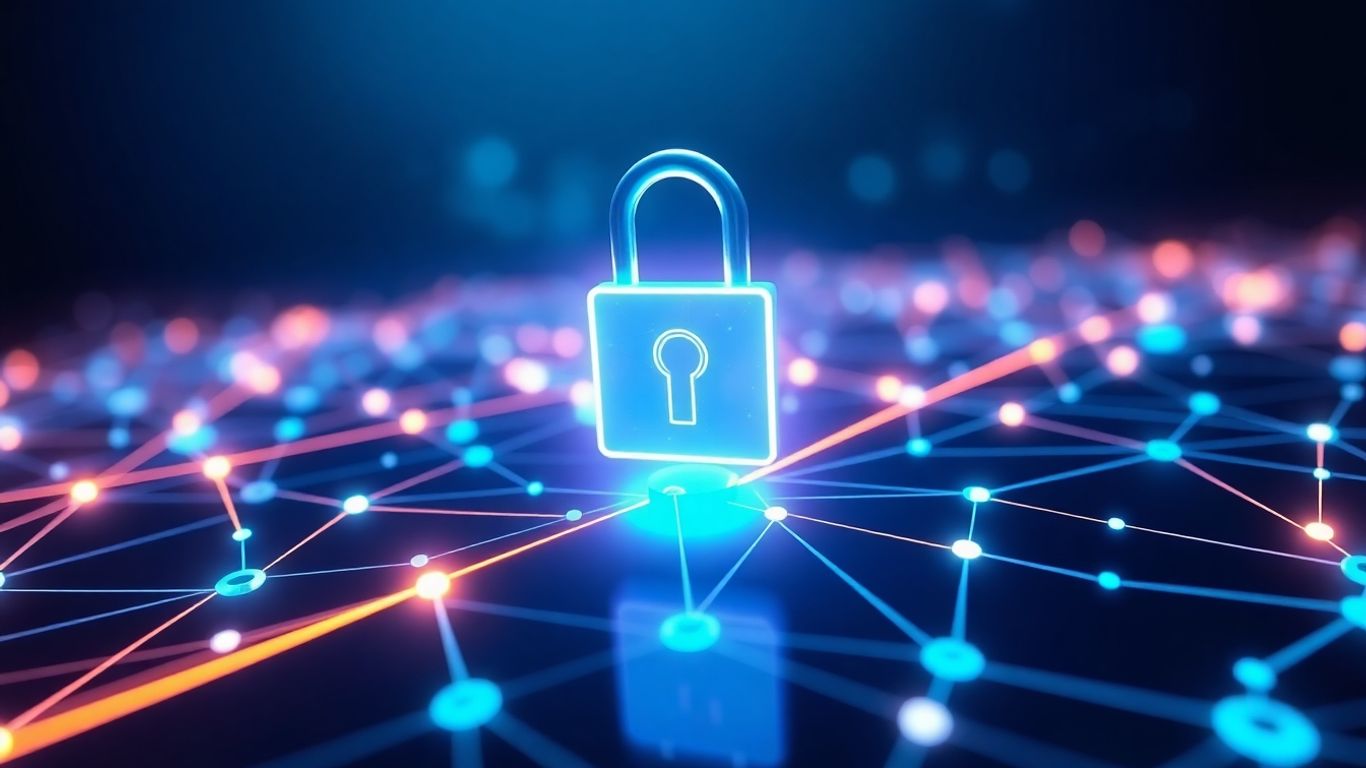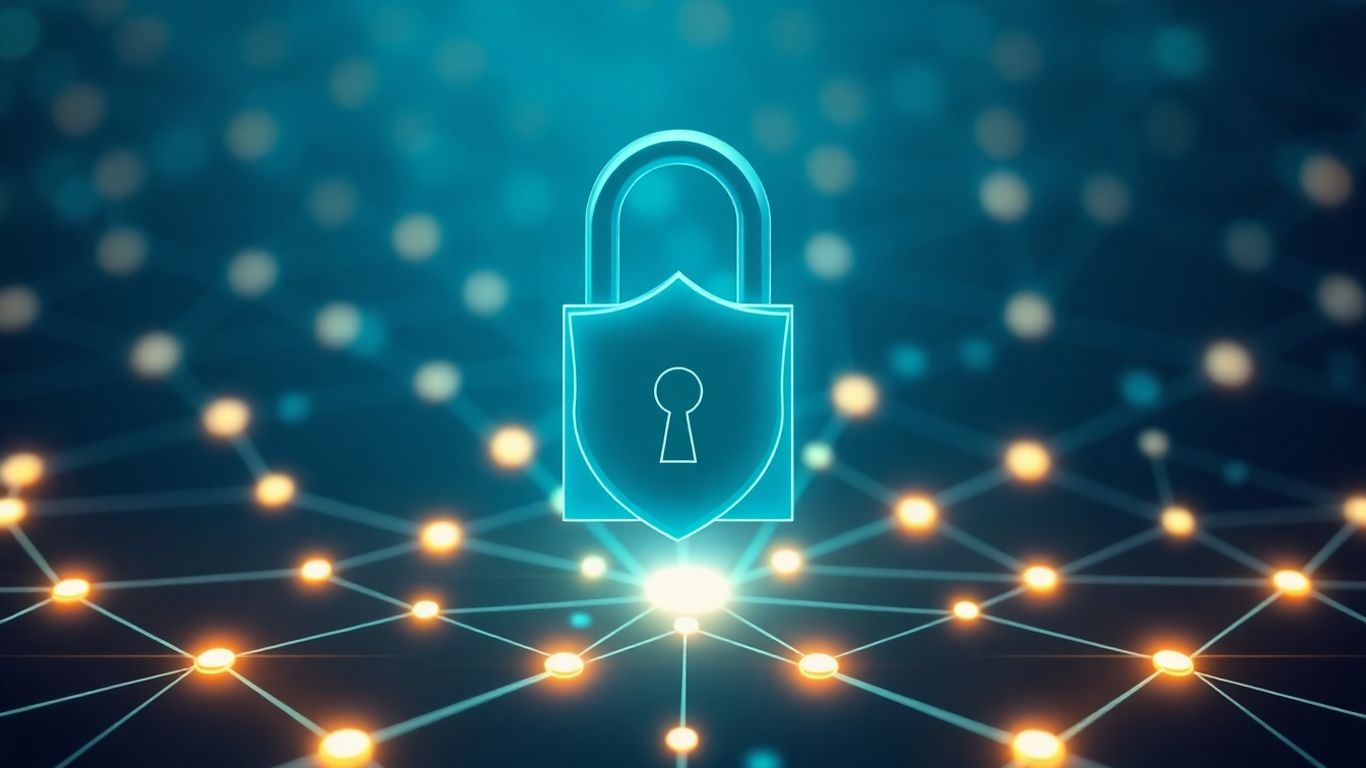[ newsletter ]
Stay ahead of Web3 threats—subscribe to our newsletter for the latest in blockchain security insights and updates.
Thank you! Your submission has been received!
Oops! Something went wrong. Please try again.
Master blockchain security audits with essential steps for robust protection. Learn best practices, emerging trends, and secure development for your projects.





So, you're building something on the blockchain, huh? That's pretty cool. But let's be real, keeping it safe is a big deal. Billions have been lost because of security holes, and nobody wants that. That's where blockchain security audits come in. Think of them as the security guards for your digital money and code. We'll look at how these audits work, what tools you can use, and what's coming next to keep your projects from becoming another sad news story.
Blockchain technology, with its promise of security and transparency, isn't entirely without its weak spots. Thinking it's completely safe just because it's decentralized is a bit like assuming a castle is impenetrable because it has a moat. While the core design offers a lot of protection, there are specific areas where things can go wrong, and attackers are always looking for these openings.
It's a bit of a head-scratcher, right? Blockchain is built on security principles, yet it's a target. The very features that make it strong, like immutability, can also make a breach devastating. Once something bad is on the chain, it's there for good. This means any vulnerability exploited can have lasting, serious consequences. Attackers know this and often focus their efforts on systems with high value, hoping for big payouts. They might spend a lot of time and resources trying to crack into valuable protocols. On the other hand, simpler attacks, like phishing, are still super common because they're cheap and can still work.
The goal for developers is to make attacks so costly and difficult that they just aren't worth the effort for potential attackers. It's about raising the bar so high that most bad actors look elsewhere.
Smart contracts are like automated agreements that live on the blockchain. They're incredibly useful for automating processes, but they're also a major source of security concerns. Because they often handle valuable assets, any bug in their code can lead to significant financial losses. Think of them as tiny programs running on the blockchain, and if there's a mistake in the programming, it can be a huge problem. Since they can't be easily changed once deployed, a flaw can be permanent. This is why thoroughly checking smart contract code is so important. You can find a lot of information on common smart contract vulnerabilities and how to fix them, which is a good starting point for developers.
Beyond smart contracts, other issues pop up. One well-known threat is the 51% attack. This happens when one person or group controls more than half of the network's computing power. With that much control, they could potentially mess with transactions or even prevent new ones from being confirmed. It's a big deal for networks that rely on this kind of consensus.
Here are a few other common problems:
It's clear that while blockchain has strong security features, it's not a magic shield. Developers need to be aware of these potential weak points and actively work to prevent them. Using tools to help find bugs is useful, but it's not the whole picture. Skilled people are still needed to review the code and make sure everything is as secure as possible. Staying updated on new threats is also key in this fast-moving space.
When it comes to keeping your blockchain project safe, just running a security audit once isn't really enough. It's more about how you approach the whole process, making sure you're not just ticking boxes but actually building a more secure system. Think of it like maintaining a car; you don't just get an oil change and forget about it. You keep up with it.
Automated tools are super handy for a first pass. They can scan through a lot of code really quickly, catching those common, obvious mistakes. It's like having a tireless assistant who never misses a typo. However, these tools often miss the more complex issues, the ones that require a human to really think through the logic and the project's goals. That's where manual audits come in. Human auditors can spot subtle flaws and understand the context of the code in ways machines can't. It’s best to use both: let the automated tools do the heavy lifting, then have skilled people do the in-depth review. This approach helps catch a wider range of problems.
The blockchain space moves fast. New threats appear all the time, and what was considered secure yesterday might be a weak spot today. This means your auditing tools and processes need to stay current. You've got to make sure your software is updated with the latest security information and that you're aware of new attack methods. It’s a continuous effort, not a one-time event. Keeping your tools up-to-date is just as important as the audit itself.
The effectiveness of any blockchain security audit hinges significantly on the skill and diligence of the human auditors involved. While tools provide valuable assistance, they are not a substitute for critical thinking, domain knowledge, and a proactive approach to identifying complex vulnerabilities.
Even with the best tools and the most up-to-date processes, the success of an audit really depends on the people doing the work. You can have all the fancy software, but if the person using it doesn't truly grasp what they're looking for, it won't be very effective. It's like giving someone a recipe but they don't know how to cook. This means investing in training your team so they understand not just how to run the tools, but how to interpret the results and think critically about the system's overall security. A skilled auditor can connect the dots in ways that automated systems just can't, making them a vital part of the security level M standard.
So, you've gotten your code checked out by auditors, which is great. But a solid blockchain project needs more than just a one-time code review. Think of it like building a secure house – you need strong walls, sure, but you also need good locks, maybe an alarm system, and a plan for what to do if someone tries to break in. In the blockchain world, these extra layers of defense are super important.
Security audits are like getting an independent inspection of your project's code and design. Specialized firms or experienced individuals go through everything with a fine-tooth comb, looking for weaknesses. They're great for catching obvious flaws and giving you a professional opinion on your security posture at a specific point in time. Many projects regularly engage auditors to review their core components and smart contracts. However, it's important to remember that an audit is a snapshot. It can't guarantee that no bugs exist, and the scope is usually defined beforehand. The findings are helpful for making improvements, and sometimes, publishing the audit report can build trust with the community. For example, OpenZeppelin Research is a leading standard in ensuring the security of decentralized systems through their smart contract audits.
While audits are proactive checks, bug bounties are about continuous, crowd-sourced security. You set up a program that rewards people for finding and reporting vulnerabilities. This is a fantastic way to keep security researchers engaged with your project long-term. Many chains and applications run these programs, sometimes offering rewards that can be quite substantial for critical bugs. It's a signal that the project takes security seriously. The core idea is to pay for security discoveries.
Having a clear plan for what happens when a vulnerability is found is just as important. This is where coordinated vulnerability disclosure (CVD) policies come in. Most mature projects have a SECURITY.md file that outlines how to report issues privately. The goal is to allow the project team to fix the problem without it being publicly exploited. This usually involves a period where the vulnerability is kept secret while a patch is developed and deployed, followed by a coordinated announcement. It's a delicate dance, but it's vital for protecting users and the network.
Building a secure blockchain isn't a one-time task; it's an ongoing commitment. Combining formal audits with active bug bounty programs and a transparent disclosure policy creates a robust defense system that benefits everyone involved.

The world of blockchain security is always on the move, and auditing is no different. We're seeing some pretty cool shifts happening that are making audits smarter and more effective. It's not just about finding bugs after the fact anymore; it's about getting ahead of them.
Artificial intelligence and machine learning are starting to really make their mark. Think of it like having a super-smart assistant that can sift through code way faster than any human. These tools can learn from past vulnerabilities, spot patterns, and even predict where new problems might pop up. This proactive approach means we can catch issues before they even become a headache. It's still developing, but the potential for AI to speed up audits and find things humans might miss is huge. This technology offers a more secure and reliable approach to verifying transactions and ensuring data integrity.
Instead of just doing a check-up once in a while, the trend is moving towards constant vigilance. Real-time monitoring means systems are being watched 24/7 for any weird activity. This could involve:
We're also starting to see ideas around making the auditing process itself more decentralized. This could mean using blockchain technology to manage audit records, making them transparent and tamper-proof. It might also involve community-driven validation or using smart contracts to automate certain audit checks. The goal is to create a more open and trustworthy auditing ecosystem, moving away from relying on a single point of control. This shift is about building trust directly into the audit process itself, making it more robust and less susceptible to single points of failure. It's a big change from how things have been done, but it aligns well with the core principles of blockchain technology. The idea is to make audits more accessible and verifiable for everyone involved, which could really change how we think about security audits.
The effectiveness of any blockchain security audit hinges significantly on the skill and diligence of the human auditors involved. While tools provide valuable assistance, they are not a substitute for critical thinking, domain knowledge, and a proactive approach to identifying complex vulnerabilities.
Building a secure blockchain application starts long before you even think about deploying it. It's about laying a solid groundwork from the very beginning. This means making smart choices about the technology you use and how you write your code. Getting these initial steps right can save you a lot of headaches down the road.
Picking the blockchain platform is a big deal. They aren't all the same, and each has its own strengths and weaknesses when it comes to security. Think about what your project needs. Are you building a complex decentralized app? Ethereum is a common choice, but there are others like Solana, Polkadot, or even private blockchains, depending on your goals. Some platforms have more mature security features built-in, while others might require you to implement more security yourself. It's like picking the right foundation for a house – you want something sturdy that fits the design.
This is where the actual coding happens, and it's super important to do it right. You need to follow good coding habits, just like you would for any other type of software. This includes things like:
Writing secure code isn't just about avoiding bugs; it's about anticipating how someone might try to break your system and building defenses against it from the start. Think like an attacker, but build like a defender.
Cryptography is the backbone of blockchain security. It's what makes transactions secure and data private. You need to make sure you're using up-to-date and robust cryptographic methods. This includes:
It's also a good idea to keep your cryptographic libraries updated. Old versions might have known weaknesses that attackers can exploit. Staying current is key to maintaining a strong security posture.

Think of a security audit like a check-up for your blockchain project. It's super helpful, but it only tells you what's going on at that exact moment. Once the auditors pack up and leave, your code might change. Maybe you're adding a new feature, fixing a small bug, or just tweaking something under the hood. Even a tiny change can accidentally open up a new security hole. It's like fixing a leaky faucet and somehow causing a pipe to burst in the basement. So, whenever you make changes to your code, especially significant ones, it's really smart to get it re-audited. This doesn't mean you need a full-blown audit every single time, but a targeted review of the modified sections can save you a lot of headaches down the line.
The world of cyber threats is always shifting. New ways to attack systems pop up all the time, and what was considered safe yesterday might be a weak spot today. It's a bit like trying to keep up with the latest fashion trends, but with much higher stakes. For blockchain projects, this means constantly keeping an eye on the news, security forums, and research papers. Understanding new attack vectors, like novel smart contract exploits or network-level vulnerabilities, is key. This proactive awareness allows teams to patch potential weaknesses before they are exploited.
Ultimately, security isn't just about tools and audits; it's about the people involved. Building a strong security culture means that everyone on the team, from developers to project managers, understands the importance of security and takes responsibility for it. This involves regular training, open communication about security concerns, and making security a priority from the very beginning of any project. When security is ingrained in the team's mindset, it becomes a natural part of the development process, not an afterthought.
Security is not a destination, it's a journey. The blockchain landscape is dynamic, and so must be our approach to protecting it. Relying solely on initial audits is like building a house and never checking for cracks or wear and tear over time. Continuous vigilance, adaptation, and a commitment to ongoing security practices are what truly safeguard decentralized systems and the users who depend on them.
So, we've gone over a lot of ground, right? From understanding the basic risks to digging into audits and what's next. Keeping your blockchain projects safe isn't a one-and-done thing; it's more like a marathon. It means staying updated, using the right tools, and honestly, just being smart about it. The tech is always changing, and so are the ways people try to break things. By putting security first, using audits wisely, and keeping an eye on new trends like AI in security, you're building a much stronger foundation. It’s about making sure your project doesn't end up as another cautionary tale. Keep learning, keep securing, and build with confidence.
Think of a blockchain security audit like a check-up for your project's code. Experts carefully look for any weak spots or mistakes that hackers could use to cause trouble. It's all about making sure your digital money and information are safe.
Smart contracts are like tiny computer programs that run on the blockchain and often handle money. Because they can't be easily changed once they're live, any small bug in them can become a big problem, leading to lost funds. Auditing them is super important.
Computers are great at finding some problems really fast, like simple mistakes. But they can't catch everything. Human experts are still needed to find the trickier issues that require clever thinking and understanding how the whole system is supposed to work.
Security isn't a one-time thing. The world of blockchain changes fast, so you need to keep checking. It's a good idea to do checks regularly and especially after you make any changes to your project's code.
Audits are great, but other things help too! Bug bounty programs encourage people to find and report problems for rewards. Having clear rules for reporting security issues also helps the community get involved in keeping things safe.
Things are getting smarter! We're starting to use AI and computer learning to find problems faster. Also, systems are being watched all the time, not just checked once in a while, to catch bad activity as it happens.


